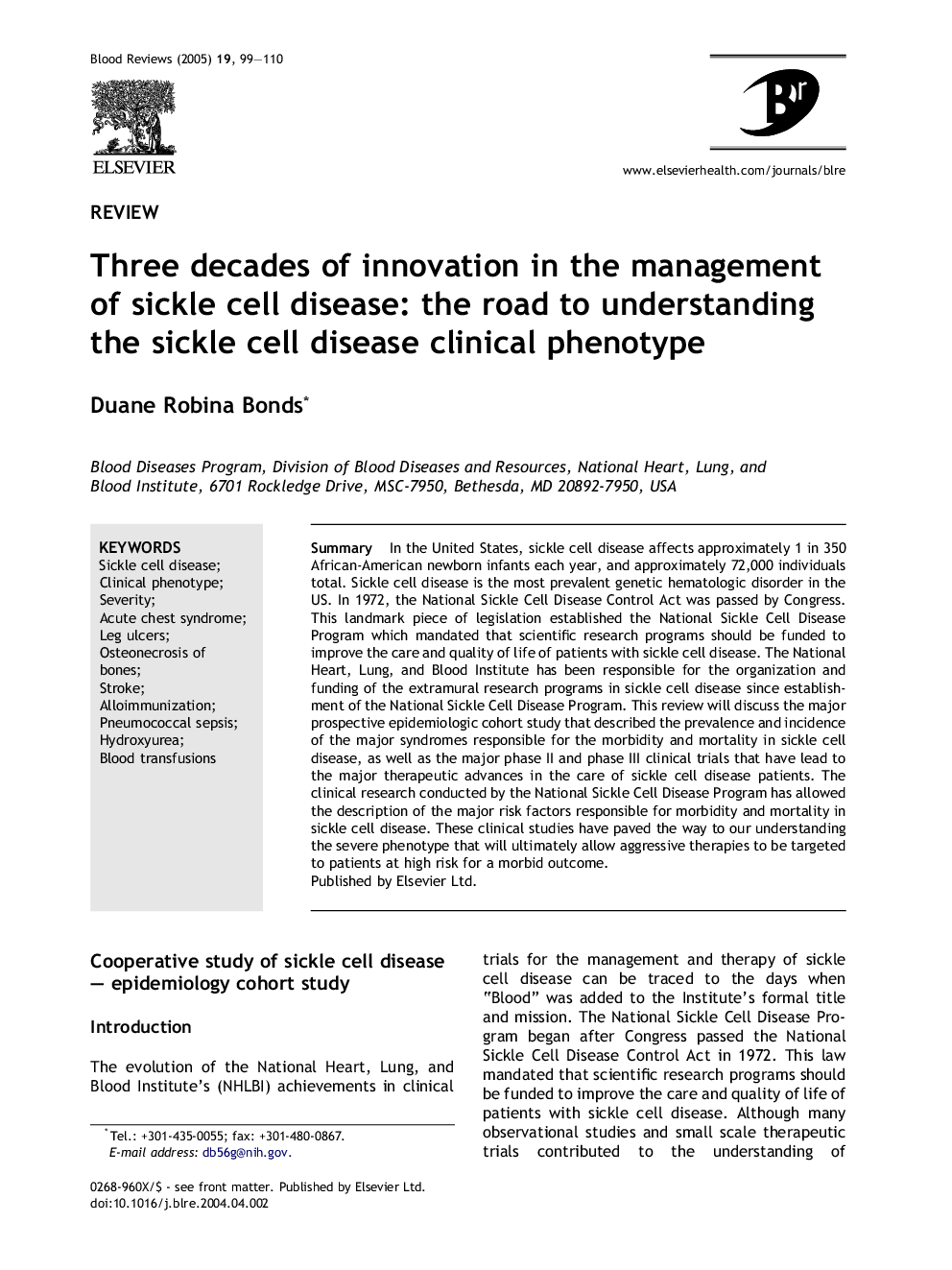| Article ID | Journal | Published Year | Pages | File Type |
|---|---|---|---|---|
| 10895938 | Blood Reviews | 2005 | 12 Pages |
Abstract
In the United States, sickle cell disease affects approximately 1 in 350 African-American newborn infants each year, and approximately 72,000 individuals total. Sickle cell disease is the most prevalent genetic hematologic disorder in the US. In 1972, the National Sickle Cell Disease Control Act was passed by Congress. This landmark piece of legislation established the National Sickle Cell Disease Program which mandated that scientific research programs should be funded to improve the care and quality of life of patients with sickle cell disease. The National Heart, Lung, and Blood Institute has been responsible for the organization and funding of the extramural research programs in sickle cell disease since establishment of the National Sickle Cell Disease Program. This review will discuss the major prospective epidemiologic cohort study that described the prevalence and incidence of the major syndromes responsible for the morbidity and mortality in sickle cell disease, as well as the major phase II and phase III clinical trials that have lead to the major therapeutic advances in the care of sickle cell disease patients. The clinical research conducted by the National Sickle Cell Disease Program has allowed the description of the major risk factors responsible for morbidity and mortality in sickle cell disease. These clinical studies have paved the way to our understanding the severe phenotype that will ultimately allow aggressive therapies to be targeted to patients at high risk for a morbid outcome.
Keywords
Related Topics
Life Sciences
Biochemistry, Genetics and Molecular Biology
Cancer Research
Authors
Duane Robina Bonds,
